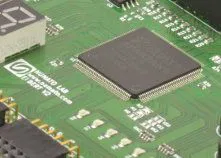Table of Contents:
Raspberry PC – is it possible?

Raspberry Pi 4 is the latest generation of the cult minicomputer, offering above-average performance and excellent peripherals. While all previous versions of Raspberry Pi were well suited to embedded applications, the latest edition of the popular board is also suitable as a desktop computer – not only thanks to its large amount of RAM and even faster processor, but also due to its dual HDMI output, which enables work with two screens in 4K resolution.
However, user habits may be an issue – while Linux systems are best suited to single board minicomputers for a variety of reasons, many people may find switching to Linux, with its drastically different architecture and user interface compared to Windows, an insurmountable barrier. Fortunately, there are two ways around this obstacle.
Windows 10 IoT Core
The easiest way to install Windows on a Raspberry Pi is to use the IoT Core version, which has been specially designed for minicomputers and other embedded systems. The great advantage of this solution is that the distribution has been developed taking into account the obvious hardware limitations faced by embedded designers working on high-level operating systems.
The limited range of architectures (most SBCs are based on ARM processors instead of x86 or x64), the relatively small (compared to full-sized machines) amount of RAM, and the much lower performance of graphics coprocessors make any saving in RAM, disk space, or computing power highly desirable for systems developed for SBCs.
Thus, Windows 10 IoT Core – while severely limited in its GUI support – allows basic utility applications to run and supports cross-platform UWA (Universal Windows App) applications.
4th generation Raspberry under Windows control
If Windows 10 IoT Core does not meet the user’s requirements in terms of performance and versatility, or if the hardware platform is to be a Raspberry Pi 4 (as the IoT version only has support for the second and third generation Raspberry Pi), installing “full-size” Windows will prove to be a good choice. To do this, however, it is necessary to use free add-on tools, as the official operating system from the Redmond giant is definitely not ARM processor-friendly software.
In the case of Raspberry Pi 4, Windows 10 should be downloaded in a suitably “crafted” version, available e.g. on the Discord Group project website, and then you should download and run a free Windows on Raspberry tool (called WoR for short). The programme will allow you to choose the image file and the memory medium on which to install the system. At the next stage of the installer’s work, you should indicate the sources of the packages available on the project’s servers, as well as select the amount of RAM present on the minicomputer’s board (it is worth knowing that the project has a memory usage limitation of 3 GB). A necessary step of the installation is also the introduction of the WinPatch patch, enabling correct RAM handling.
Additional notes on installing Windows 10 on Raspberry Pi

Despite the obvious advantages of installing full-sized Windows on a Raspberry Pi minicomputer, you should also be aware of some limitations. The first, and one of the most important, is the lack of system drivers to support the built-in WiFi/Bluetooth wireless connectivity module present in all fourth-generation Raspberries – a simple and effective way around this problem is to use one of the numerous USB network adapters.
The same is true of the Ethernet interface on the Raspberry Pi 4 – fortunately you can easily find an inexpensive USB adapter to connect the minicomputer to a wired network.
Finally, we need to mention some legality issues – while the Windows on Raspberry project is free and open source, it does not in any way make the problems with the legality of such unofficial use of Windows image disappear as if by magic – the issue of potential liability for the use of such solutions, as always in the case of software, lies with the end user.
How useful was this post?
Click on a star to rate it!
Average rating 4.5 / 5. Vote count: 4
No votes so far! Be the first to rate this post.




















